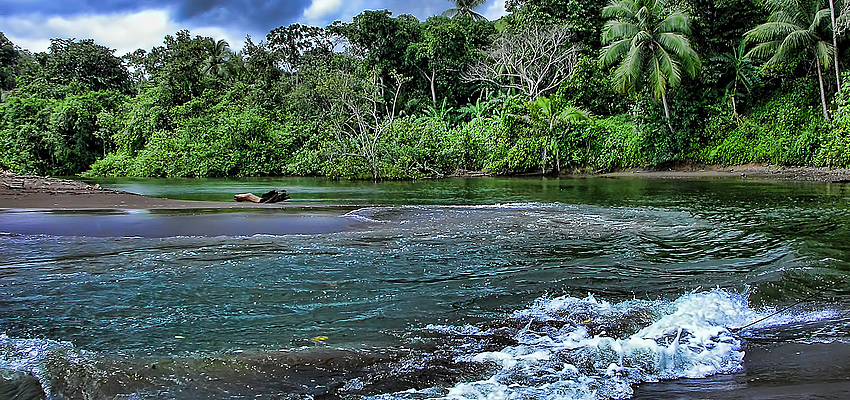


Costa Rica is a country you almost never hear about, except occasionally, when the Soccer World Cup is taking place. However, and as Google's search results proved to you when you typed in the country's name, Costa Rica represents the very essence of what travel is all about.
Costa Rica's geographical location is very easy to remember: the country is located in the middle of Central America, with the Caribbean Sea on its east coast and the Pacific Ocean on its west, and has only two neighbors, Nicaragua to the north and Panama to the south. With a succession of mountain ranges in its interior guarding an immense plateau and coastal plains extending over 1,290 km, the country offers a wide variety of landscapes and terrain within a very limited land area of barely 50,000 km².
Running in a north-west to south-east direction, the Guancaste and Talamanca mountain ranges are the defining features of a landscape that has earned Costa Rica the nickname of the "Switzerland of Central America". It is for this reason that the country has more than ten mountains over 3,000 meters, the tallest being Cerro Chirripó at 3,820 meters high. But to paint a complete picture, you also have to mention the impressive number of volcanoes in Costa Rica: 116 in total, of which five are active and monitored.
Three quarters of the population live in the Central Valley area located at the heart of the plateau, with a third concentrated in the capital San José and the the surrounding urban area.
The plains occupy the country's Caribbean coast as well as its Pacific side, the latter of which is significantly more irregular in form, largely because of the presence of the still wild and untamed Nicoya Peninsula.
Costa Rica is best visited during the dry season, which runs from December to April. If you go during the rainy season, from May to November, you should prepare yourself for periods of intense heat.
It is no exaggeration to describe Costa Rica as a giant, open-air nature reserve. With 32 national parks, eight biological reserves, 51 animal reserves, 13 forest reserves – the names of Tortuguero, Palo Verde, Monteverde, Chirripo and Corcovado, to cite the best known of these spaces dedicated to protecting the biodiversity, will quickly become familiar to you duringyour trip to Costa Rica – the country has made nature conservation and ecotourism its principal sources of revenue. Official experts have recorded, amongst other wonderful things, 34,000 species of insects, 10,000 species of plants and 870 species of birds. With feathers reaching over a meter in length, the resplendent quetzal – this is its actual name! – is one of the most beautiful specimens for tourists to admire, as well as for anyone who enjoys seeing and discovering new things on their travels.
Costa Rica has an abundant mammal population, with 231 species in total. Primates, tapirs, sloths, jaguars and bats all exist happily together at the nature reserves. And to finish, we must mention the white-tailed deer: the animal is one of Costa Rica's national emblems and features on its 1000- colón bills.